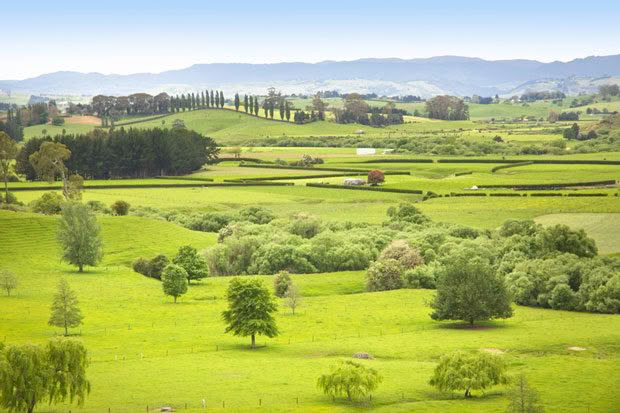8 spring pasture tips

Words: Dr Clive Dalton
If there’s no good spring flush, then find out why – there are always plenty of reasons.
Are you overstocked?
This is the most important one: your pasture hasn’t been given any time to grow a bank of feed for spring. Admitting that you have too many stock is not popular, as folk don’t like getting rid of animals they know as friends, and try to feed supplements (frequently never enough) to compensate. Then they live with skinny stock for so long that they think it’s normal, and neighbours are never assertive enough to comment.
Is your soil fertile?
The other key problem is low soil fertility as your fertiliser programme (if you have one) won’t grow the pasture needed to meet stocking needs. The easiest thing is to blame the weather and the old chestnuts of cold spring, low soil temperatures, cold winds etc. It is true that the 10cm soil temperature needs to be above 6°C before ryegrass really gets going.
Each year, it pays to review the dates when you have planned the start of calving, lambing and kidding, as the peak of lactation in sheep and goats is about four weeks after birth, and this is when you need full feed available.
When your spring flush runs out
But perhaps you have planned for and got a flush of spring grass, a nice ‘wedge’ of long saved pasture that reaches the top of your short gumboots and blows gently in the wind.
But when this has been eaten you may start wondering why there is no regrowth. This is the classical ‘pinch period’ in the second grazing round.
Ironically, part of the problem is letting the saved pasture get too long and then grazing it down too low, so you’re not leaving enough ‘residual’ leaf to generate the regrowth you need. This residual should be at least 1100kg DM/ha or 50mm long for cattle, as they cannot graze lower than this.
It’s always best to have plenty of good quality supplements to fill any feed gaps. Another reason is the lack of nutritional balance in spring pasture. It’s very high in protein, high in energy, low in Dry Matter and low in fibre. Having good quality hay is useful to provide fibre but only feed what stock can clean up otherwise they use it as bedding and waste it – stock won’t eat dirty hay. Never feed pasture supplements which have gone mouldy as they are a health risk to both stock and humans.
There can also be a panic of sorts when the spring flush gets out of control, and you have too much pasture which is starting to show seed heads in a very short time as temperatures rise. Making silage is the best option, if you can handle wrapped bales, as it’s too early to make hay.
The easiest thing to do is to graze the tops off the pasture, then get stock moving onto the next paddock so you’re leaving plenty of residual for the next round. Paddocks taken out for silage will be ready to be put back into the grazing round in about three weeks.
If you can’t see feed building up in paddocks earmarked for silage in early November in the North Island, then a dressing of nitrogen (25kgN/ha) can boost growth. However, wait till the soil temperatures have risen well above 10°C, otherwise the response will be low and uneconomic.
When things are right, nitrogen should give a 10:1 response, which means you’ll get 10kg of pasture Dry Matter for each 1kg of nitrogen in the fertiliser applied. However, this will only work if the other major soil nutrients are in balance.
In today’s concern for the environment, remember to use N fertilisers very carefully to prevent runoff into drains and creeks, which should now all be fenced from stock and planted.
Weeds also love spring, and there are always plenty around with good root storage to provide nutrients in the pasture. This is the time to deal to weeds so learn to recognise them in the rosette stage, and use the appropriate treatment. Ragwort and the thistle family are the main ones, as well as buttercups and barley grass.
8 Tips:
- Soils will still be wet so avoid pasture damage from large animals at all costs. Organise a stand-off pad for cattle, and keep moving feed troughs and hay racks around to avoid waste and soil damage.
- Don’t place large silage bales in a paddock and let stock feed from them. This will pug the soil and burn the pasture.
- Don’t graze down to soil levels – leaving a good residual will hasten regrowth.
- Ensure electric fences are giving full power to avoid breakouts and pasture damage.
- Use a back fence and mobile water troughs to keep stock off grazed areas to allow regrowth.
- When moving stock over wet paddocks, take them through the ungrazed pasture, and not across the grazed area where they’ll do more damage.
- Try a small N fertiliser application (25kgN/ha) for a pasture boost, but avoid drains and streams when spreading.
- Fence off all drains and streams from cattle, and plant a riparian strip along them. If the stream water is dirty, find out why and get help to fix the problem.
Spring buy or sell?
Buying more stock on the spring ‘grass market’ is never a good idea, as everyone else wants them too. However, it is an excellent time to have stock to sell.
Love this story? Subscribe now!
 This article first appeared in NZ Lifestyle Block Magazine.
This article first appeared in NZ Lifestyle Block Magazine.
